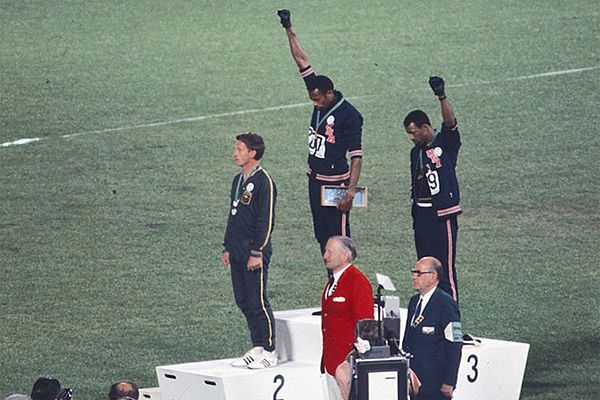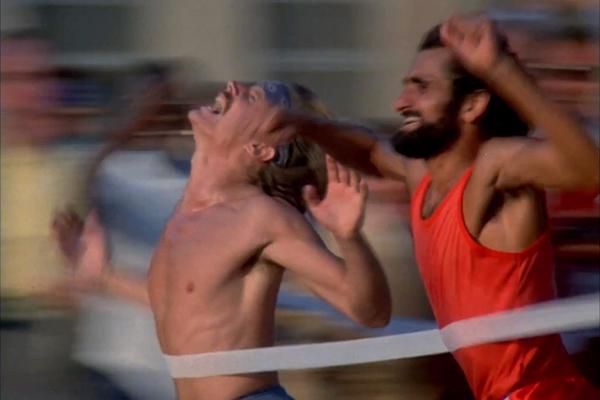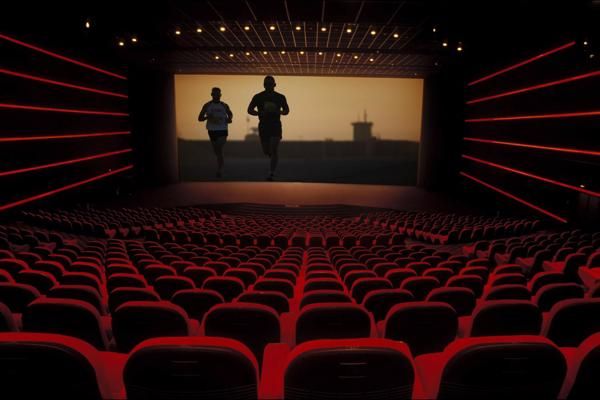Tommie Smith and John Carlos (© The Stand)
The Stand – How One Gesture Shook the World, the latest athletics film from Tom Ratcliffe, passionately details one of history's most iconic and enduring sporting moments: the 200m medal podium protest by US sprinters Tommie Smith and John Carlos at the 1968 Mexico Olympic Games. And on many levels, its retelling, more than five decades later, couldn’t be more timely.
As one of the seminal moments in sports history, the image is a familiar one. But the broader story behind it was not. That’s a hole in the record that Ratcliffe and co-director Becky Paige wanted to fill.
You certainly know the scene. With a massive global platform that only an Olympic Games can provide, Smith and Carlos, the freshly-minted gold and bronze medallists, chose to use their victory stand moment of glory to protest the racial inequality that was ripping their country apart by pointing their black-gloved hands towards the sky. It was a protest the likes of which had never been witnessed on an international sporting stage - not before, and not since.
Just hours after their medal-winning performances - Smith broke the world record with a stunning 19.83 run - the pair walked solemnly towards the medal podium, each carrying a shoe behind their back, with just black socks covering their feet. As the national anthem began to play, each athlete bowed his head and raised a single black-gloved fist, Smith his right, Carlos his left. At just 24 and 23, respectively, Smith and Carlos became the subjects of the indelible image of a salute that would come to symbolise an era, inspire every generation since and one that would define, in times both bad and good, the rest of their lives.
Their gesture was certainly a brave, defiant stand against institutionalised racism, segregation, and social injustice in the US. But as we come to learn, it also held a broader meaning, one of “freedom and justice for all”, as Smith points out, and, as Carlos says, for “respect and pride”. That’s thanks largely to Ratcliffe's attempt to capture the inspiration, motivation and the spirit of their historic protest.
There were serious consequences.
While recognised as heroes now, Smith and Carlos paid a steep price for their stand. Both were immediately expelled from the Olympic village and sent home where, instead of a hero's welcome, they were vilified and met with death threats. Ostracised from their sport, their careers on the track were over two years later and decades of personal and professional struggles followed. The film retraces the journey that led to that moment, and the ones that followed - which still reverberate loudly today.
The film begins with a description of the conditions in the US that led to the civil rights struggle in the early 1960s, a look at the movement for justice and how it specifically came to involve African-American athletes through the Olympic Project for Human Rights (OPHR) and the involvement of the Harvard University Rowing Team, an especially interesting and lesser known backdrop to the story, before it introduces us to Mexico City on 2 October 1968 when hundreds of student demonstrators were killed by the Mexican military during a peaceful protest that later became known as the Tlatelolco massacre.
"You could still see the blood," Smith recalled. "So we knew we were moving into a very dangerous situation."
Then comes the dramatic build-up to the race itself, and a vivid retelling of the short hours leading to the podium ceremony.
When Ratcliffe completed the critically acclaimed Bannister, the Everest on the Track, which was released in 2016, he and Paige began looking for another project with historical significance. With the 50th anniversary of the Mexico City Games approaching, the 200m medal stand protest became an obvious choice.
"As we looked around we found a lot on Tommie, John, the protest," Ratcliffe said, "but felt that there was nothing particularly well done and none that dug into the origin and meaning of their actions on the podium. Most assume that John’s and Tommie’s protest was about 'Black Power', but this was neither their intention nor the meaning of their raised fists. So as we learned more, this really intrigued us."
There is no narration. Instead, the story is told through intimate portraits by those who lived through those moments, athletes mostly from Smith and Carlos's generation, but others as well: Ralph Boston, the 1960 Olympic long jump champion and world record holder; Mel Pender, a career military officer, Vietnam War veteran and member of the gold medal-winning 4x100m relay team in Mexico City; Patty Van Wolvelaere, a hurdler on the 1968 US team; rowing team members Paul Hoffman and Cleve Livingston; Harry Edwards, the sociologist who founded the Olympic Project for Human Rights; and of course Smith and Carlos, ultimately the OPHR's most visible supporters.

But as a film about athletes, it’s not all about the political moment.
Ratcliffe is absorbed in the sport of track and field athletics like few others. He was a professional runner, athlete representative, writer and pundit. That shows in the dramatic and informative way he builds up to the 200m showdown itself, one of the finest Olympic sprint races ever, showcasing Smith and Carlos as the exceptional athletes that they were.
That's important for two reasons: it's why the protagonists are in Mexico City in the first place, and as New York Times journalist Selena Roberts points out, they had to land on the podium. Without that, there would be no stand. A minor groin injury that struck Smith in the morning's semi-final showed that a medal was anything but a foregone conclusion.
The same drama builds towards the moment they took the victory podium. We’re introduced to Australian Peter Norman, the silver medallist, who joined the pair in protest. We follow along as Smith and Carlos planned their next move and how the gesture was more than the 'Black power' salute it came to represent.
For Carlos, his podium moment was nothing short of emancipatory. Among the thoughts that raced through his mind on the victory stand, he said, is that "they can never ever put shackles on John Carlos again. I'm a free man."
But that doesn’t mean the struggle is over, as vividly illustrated by the most recent wave of Black Lives Matter protests that began in the US in late May and soon spread to other parts of the world.
The film doesn’t include that. Hoping for a release in time for the 50th anniversary of the Mexico City Games, production was wrapped up 2018, but it does make mention of football player Colin Kaepernick who began kneeling during the national anthem to protest policy brutality and ongoing institutionalised racism.
"These athletes today, who are protesting against injustice stand on the shoulders of giants," Edwards says. "Their message is critical."
Powerful and electric, ‘The Stand’ boldly and clearly delivers the message that the "Olympic rings should tie the world together, not tear it apart.”
Critically, it transcends sport like the gesture did at the time. Given current worldwide events, its release could not be better timed.
"I felt responsibility to stand up for humanity,” Smith says. "That I can be some kind of positive force for change. I didn't know how to say it, I just felt it.”
The Stand delivers that message with inspiring authority.
Bob Ramsak for World Athletics
The Stand: How One Gesture Shook the World
Running time: 69 minutes
Release date: 4 August 2020
Where to watch
Digital: iTunes, Amazon, Google Play, Microsoft, Vudu, FandangoNOW
Cable: iNdemand, Bell, DirecTV, Dish, Telus, Vubiquity







